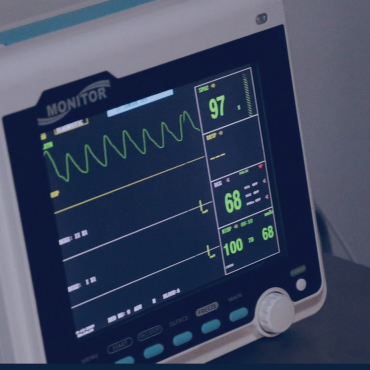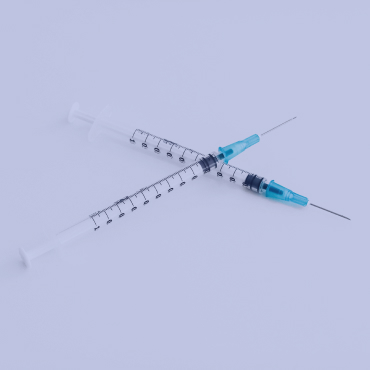Service
Healthcare
It is a common place that taking care of the health of prisoners is their human right and that ultimately it is a matter of public health. There are important suggestions at an international level aimed at improving the health of those in prison and reducing both their risks and risks to society.
Communicable diseases are frequently transmitted among inmates; rates of HIV, hepatitis and tuberculosis are much higher among them than in the general population. There is also a high prevalence of mental health conditions, substance misuse problems, and a higher prevalence of the disease.
Our experts support government administrations through the development of customized integrated health systems and solutions related to ageing, palliative care, mental health, substance addiction problems and communicable diseases in detention contexts.
Public health cannot afford to ignore the health of those who are confined in correctional services
The rise and rapid spread of HIV infection and AIDS, the resurgence of other serious communicable diseases such as tuberculosis and hepatitis and the increasing recognition that prisons are inappropriate receptacles for people suffering from addiction to substances and mental conditions have thrust prison health high on the public health agenda.
As many societies try to cope with these serious health problems, it has become clear that any national strategy for controlling them requires developing and implementing integrated policies that also encompass the reality of prison systems.
Good health care in correctional institutions creates considerable benefits: it prevents the spread of diseases and promotes health through awareness of what everyone can do to help maintain their own health and well-being and that of others. In addition, it can help to improve the health status of communities, thus contributing to the broader sense of health.
In this area of operation, we develop and implement:
- Primary care programmes;
- Mental health programmes;
- Drug addiction programmes (treatment and damage reduction);
- Suicide prevention programmes;
- Contagious diseases reduction programmes;
- Prison health performance and quality indicators;
- Pharmacy management systems.

Many challenges arise in several fronts of the correctional systems with the advent of older ages within the inmate population
Critical factors that require urgent tackling include changes in policy-making, management practices, infrastructures, quality (of care) systems, human resources and budgeting.
Currently, there are more than ten million incarcerated people worldwide and the global prison population rate is increasing. Ageing, in general, is also a recent and challenging phenomenon in developed countries, and, in particular, it has been being incrementally mirrored inside penal institutions. As the world’s population ages rapidly, so too the number of the elderly in jails and prisons is increasing at a breakneck gallop: at a rate three times that of the general prison population.
Although most 50-year-olds in the general population are not considered elderly, the aging process seems to be accelerated by incarceration due to contributing elements such as poor physical or mental health (often the result of factors such as substance abuse, lack of access to health care, inadequate care, poverty, and lack of education) prior to incarceration, and also because of the physical and psychological stresses associated with life in prison. Older inmates have higher rates of health conditions, such as gross functional disabilities and impaired movement, mental illness, increased risk of major diseases, and an increased need for assistance with daily living activities.
Dealing with the challenges of an increasing ageing prison population is painful to prison administration whose budgets, facilities and staff are not prepared to this reality.
At IPS, we support prison systems in the definition of policies that help them:
- Divert older offenders or the ones that are chronically ill from prison;
- Rethink the length of sentences for older inmates;
- Rethink the needs for new or adapted detention facilities;
- Prepare staff on how to understand and operate with vulnerable inmates.

Mental illness is especially prevalent in prison populations, by far exceeding the rate of mental disorders in the general population
This is a global and complex challenge that requires a comprehensive approach.
It has been widely reported that prisoners have increased rates of psychiatric disorders comparing to the general population, including psychosis, depression, personality disorders and substance addictions. Such are risk factors for high suicide rates, premature mortality upon release and increased recidivism. Prisoners seldom have just one condition as far as mental health is concerned, and sufferers often find that their mental health problems are exacerbated by their other problems or even caused by them.
In order to address the complexity of the issue, comprehensive solutions are needed as well. Such complex practices include the use of multidisciplinary teams not only directly linked to health, but holistically focused on the individual and his/her physical, social psychological, and spiritual needs.
One in seven prisoners has depression or psychosis and treatment may confer additional benefits such as reducing the risks of suicide and self-harm within custody, and suicide and drug-related deaths on release, as well as reoffending. Ultimately, because it will reduce recidivism rates, proper and thorough treatment of mentally ill inmates has a large impact on public safety.
At IPS, we support governments to define policies and practices that help them increase the response to mental health disorders within prisons by enhancing the competences of management and frontline staff to address prisoners’ mental health needs and the special needs of older prisoners and cooperation with external specialized organizations.

Drug addiction among incarcerated population poses a complex challenge
The prevalence of substance abuse and dependence is exponentially higher in prisoners than the general population, having the relationship between offending and substance misuse been widely demonstrated.
This challenge is only possible to address by developing specialized services within penal institutions.
Research findings suggest that 25% to 50% of people who are received into custody have serious drug problems (1). The drug most frequently used by prisoners is cannabis, followed by cocaine and heroin.
Additionally, data from several European Union countries has revealed that the proportion of prisoners who have ever used any drug ranges from 16% to 79%, with many countries reporting percentages higher than 50% (2).
Health conditions, especially communicable diseases and psychiatric ones, are prevalent among prisoners using drugs. Although many drug users stop or reduce their use of drugs when they enter prison, some go on or switch from one substance to another, and some may even start the addiction there.
Given the complexity and contours of the challenge and of its outcomes, information on the prevalence of substance abuse and dependence in prisoners is important, as there is chance for initiating treatment and/or for encouraging contact with community services on release. In this case, prison may provide the only opportunity that many inmates have to engage with treatment. Hence the potential of specialized addiction services within penal institutions.
(1) Oliemeulen L et al. Problematische alcoholgebruikers, druggebruikers, en gokkers in het gevangeniswezen [Problematic alcohol users, drug users and gamblers in prison]. Rotterdam, Ministry of Justice, Research and Documentation Centre, 2007.
(2) Niveau G, Ritter C. Route of administration of illicit drugs among remand prison entrants. European Addiction Research, 2008, 14(2):92–98.
- Divert older offenders or the ones that are chronically ill from prison;
- Rethink the length of sentences for older inmates;
- Rethink the needs for new or adapted detention facilities;
- Prepare staff on how to understand and operate with vulnerable inmates.

Communicable diseases tend to be an issue in every correctional system
Health authorities alone are not able to address its prevention, identification and treatment. It consists of a challenging reality that requires a multifaceted approach.
Health protection in prisons is considered an essential part of public health. This idea – and specifically the issue of communicable diseases – has been operationalised by the Madrid Recommendation.
Both inmates and detention centers’ staff, are particularly at risk for communicable diseases such as hepatitis B, hepatitis C and HIV, due to their own vulnerability and the characteristics of the environment. The prevalence of incarcerated people who use drugs, including injecting ones, is particularly high; such people are also particularly affected by viral hepatitis.
Transmission preventive measures are, therefore, essential in prison system settings but health authorities alone are not able to address communicable diseases’ prevention, identification and treatment, and here’s where we make our intervention, since the scope is multifaceted, with the requirements ranging from the environment to prison management.
The optimization of prevention and treatment programmes requires the implementation of different measures, and, specifically, the roll-out of guidance notes and standard operating procedures, based on national and international guidelines, with all staff being trained in the prevention, treatment and control of communicable diseases.
We implement comprehensive solutions and programmes aimed at tackling the challenges communicable diseases pose in prisons and other detention institutions, namely:
- Information, education and communication;
- Guidelines on the hygiene requirements necessary for the management of these diseases in prisons and other infections and the prevention of nosocomial infections;
- Prevention and treatment of sexually transmitted infections;
- Prevention of sexual violence;
- Drug dependence treatment;
- Needle and syringe programmes;
- Prevention of transmission through tattooing, piercing, etc;
- Post-exposure prophylaxis;
- Prevention, testing and counselling;
- Treatment, care and support;
- Prevention of mother-to-child transmission of HIV;
- Vaccination, diagnosis and treatment of viral hepatitis;
- Protection of staff from occupational hazards.

Projects

AWARE
Cross-sectoral awareness building on mental health needs in the criminal justice system and on release

MENACE
Mental health, ageing and palliative care in European prisons

VR4DRUG Rehab
Developing and Using Virtual Reality Technology for the Rehabilitation of Drug Users in Probation Services